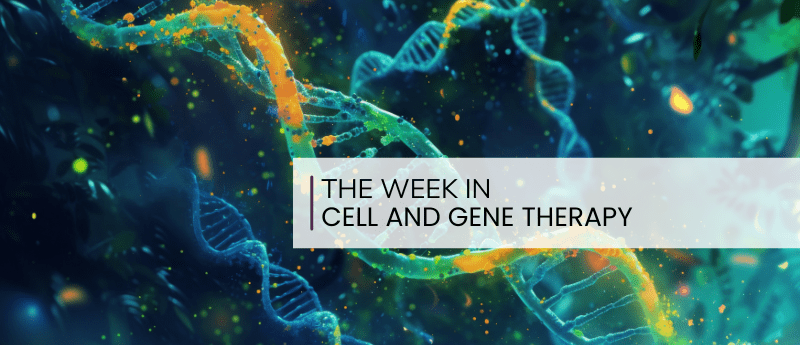Potential Solutions to Remove Barriers to Gene Therapies
ike many novel therapies, gene therapies are not without challenges that can be solved through a combination of policy and market changes. In order to improve patient access to these life-saving therapies new payment solutions, education efforts around the availability of these treatments and their benefits and risks, and the use of appropriate value assessment methods are all needed, according to a white paper from the National Pharmaceutical Council (NPC).There are a total of 14 gene therapies are now available for hemophilia, sickle cell disease and some cancers, and these potentially curative therapies often only require a single treatment, which can be complicated to deliver. The finances of paying for costly gene therapies is a challenge in the U.S., as well. Lenmeldy (atidarsagene autotemcel) is the most expensive gene therapy, with a price tag of $4.25 million. The therapy is approved to treat metachromatic leukodystrophy, a rare disorder that damages the nervous system. The late infantile form starts around 2 years of age or younger and is the most common form. It progresses fast and the mortality rate is high.
“The unique characteristics of gene therapy treatments, in conjunction with uncertainties about long-term durability and future market competition, necessitate the development of innovative models to assess the value of these treatments, promote appropriate payment and advance meaningful patient access while maintaining incentives for future research and development,” the authors wrote.
Logistical Challenges
In addition to the high cost of these therapies, they are faced with challenges related to production and distribution, as well as the logistical and treatment administration obstacles that can create barriers to accessing gene therapies. A growing number of gene therapies require extracting cells from the patient, isolating and genetically modifying the cells and then re-administering them to the patient. This is a complex and time-intensive processes, which limits the ability to scale production of these therapies.
For patients and caregivers, there is the added burden of special diagnostic testing and treatment administration, which can require that they travel long distances from home, sometimes necessitating staying in another location for a significant amount of time. Only specific providers and locations that are qualified for handling gene therapies can administer them.
Financial Challenges
Coverage by health plans varies greatly for gene therapies, which “holds important implications for equitable patient access to life-changing treatments,” the NPC authors noted. Medicaid’s coverage is more restrictive than the FDA approved label more than two-thirds (68.3%) of the time, and commercial plans have more restrictive policies more than half (53.5%) of the time.
“As payers often cite uncertainty about long-term durability and patient churn to justify coverage exclusions and strict utilization management, policy and market solutions aimed at improving patient access should consider opportunities to address these concerns,” they wrote.
Solutions
Overall, health policy proposals and market-based solutions to improve access to gene therapies need to consider all of these challenges that affect patients, manufacturers, providers, paye
Financial Challenges
Coverage by health plans varies greatly for gene therapies, which “holds important implications for equitable patient access to life-changing treatments,” the NPC authors noted. Medicaid’s coverage is more restrictive than the FDA approved label more than two-thirds (68.3%) of the time, and commercial plans have more restrictive policies more than half (53.5%) of the time.
“As payers often cite uncertainty about long-term durability and patient churn to justify coverage exclusions and strict utilization management, policy and market solutions aimed at improving patient access should consider opportunities to address these concerns,” they wrote.
“To ensure that their potential is realized, we must incentivize the development of gene therapies for those most in need,” they concluded. “Several opportunities exist to improve patient access to gene therapy treatments, including relying on appropriate value assessment methods; advancing innovative payment solutions; removing inappropriate access barriers imposed by health; and improving education and awareness of treatment availability, benefits and risks.”
Event : International Top Pharmaceutical Awards
#Professor, #Lecturer, #Scientist, #Scholar, #Researcher, #Analyst, #Engineer, #Technician, #Coordinator, #Specialist, #Writer, #Assistant, #Associate, #Biologist, #Chemist, #Physicist, #Statistician, #DataScientist, #Consultant, #Coordinator, #ResearchScientist, #SeniorScientist, #JuniorScientist, #PostdoctoralResearcher, #LabTechnician, #ResearchCoordinator, #PrincipalInvestigator, #ClinicalResearchCoordinator, #
Visit: toppharmaceutical.org
Award registration: https://toppharmaceutical.org/award-registration/
For Enquiries:pharmaquerys123@
Get Connected Here
------------------------------
------------------------------
Pinterest: pinterest.com/pharmaemail/
Twitter: x.com/TopPharmaaward
Instagram: instagram.com/toppharma23/



Comments
Post a Comment